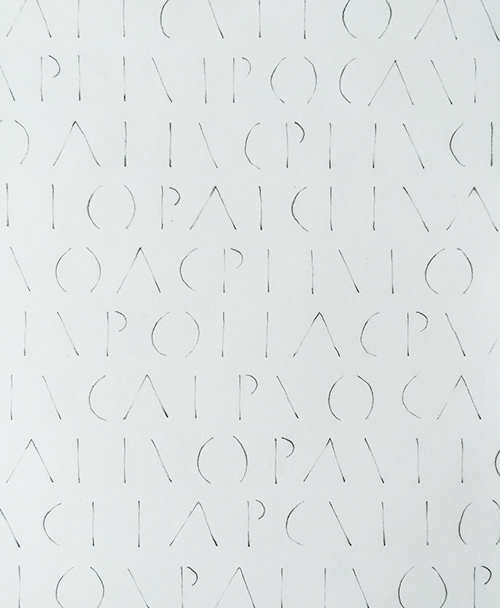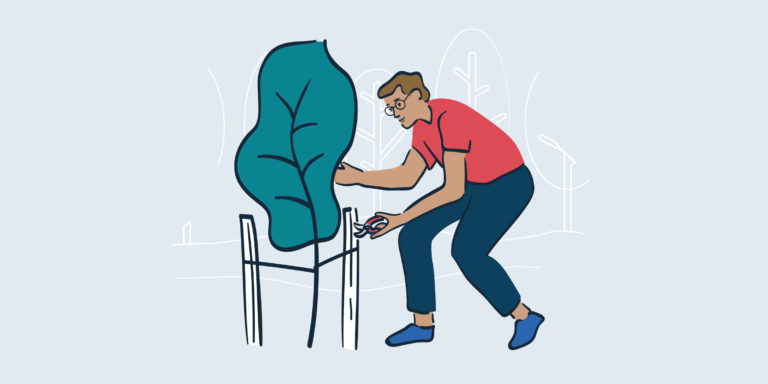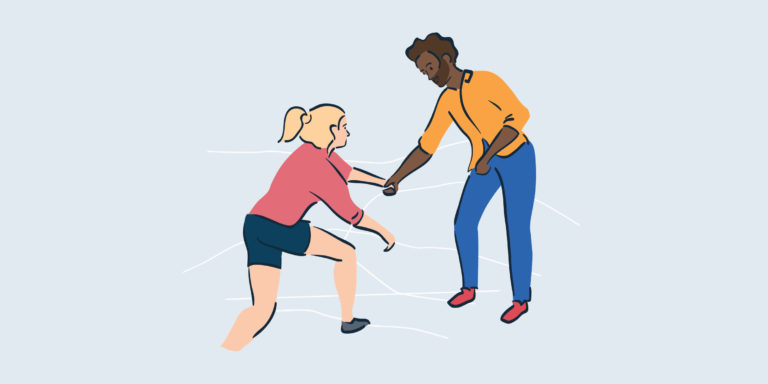Our Core Values, Episode V: Continuously Improve

This is the fifth in a series intended to go deeper into each of our core values. The series was started by Brian with Our Core Values, Episode I: Be Excellent, and Kimberly wrote about it most recently with Episode IV: Work Together. I’ll continue the discussion with our fifth core value: Continuously Improve.
As an introspective person dedicated to self-improvement, I’ve been affected by many people and events and have learned a lot about myself through these interactions. But nothing has taught me more about continuous improvement than the experiences I’ll share now.
Improve through practice
Before you read any further, draw a small line on a piece of paper. Now, draw two identical lines an equal distance apart from the first. Imagine filling an entire page with these lines. This was the exhaustingly iterative exercise that Inge Druckery had us do before each Letterform Design class as students at The University of the Arts.

The goal seemed simple enough: draw identical lines on a page so that each one matches the weight and spacing of the previous line. But what I didn’t realize at the time was that I was learning a lesson in iteration and improvement—and that these simple lines were the foundation for projects yet to come. Getting these simple lines right was imperative to tackling the more complex letterform designs we would learn later.
Each line we drew became a tiny recording in our brain and muscle memory. With each pass, we adjusted and evaluated our work in a matter of seconds before moving on to the next line. Each stroke was a new opportunity to improve on the previous effort (and was the result of every attempt before it). We made small adjustments to achieve better results as we went.
Soon enough, this process of designing, evaluating, and repeating became automatic in everything that we did—and produced results that would make Mr Miyagi proud.
Pride impedes progress
At the same time, iteration was not possible if we got too attached to our work. This was an easy feat with tiny lines on a piece of paper, but it became difficult to avoid attachment to designs we spent hours creating.
To continuously improve on our work, we had to approach designs with the same iterative process as before. Too much pride in our own accomplishments would have created a satisfying comfort that limited us from looking forward. Seeing our accomplishments as something to build on, however, created a foundation for continuous improvement.
Improve through process
The next time I was required to be critical of myself and my team was while working at a Lean manufacturing company. We were undergoing a transformation that would cut our production time significantly and improve our design and engineering process.
As a creative person, I naturally rejected the structure and documentation that was changing the way we worked. I thought the analytical process of identifying and eliminating waste to gain efficiency had no place in my creative process. But I was blinded by my own ignorance.
The Lean Six Sigma process empowered every individual in the company to challenge our process and suggest change. It provided a platform for anyone to influence the company regardless of their place in the organizational hierarchy. Most of all, it motivated me to evaluate my own creative process.
Shortly after, I put structure around repeated tasks that were once taking up significant time and brain power, which allowed me to focus my creative energy on more valuable and challenging design problems.
Set a new standard regularly
We’ve never put a name to it at Think Company, but our process of evaluating and improving ourselves shares similar principles.
As a team, we provide opportunities to learn from each other every day. Accomplishments and stories of overcoming design challenges do not remain isolated to an individual project team, and insights from past projects permeate our company through activities like Lunch-n-Learns, project retrospectives, Discipline Interest Groups (DIGs), and more . When similar design challenges arise in the future, this shared knowledge becomes a foundation for others to build upon. The inherited knowledge makes us more efficient and able to focus on novel design challenges.
As we discover better methods for achieving our clients’ vision, we set a new standard to be followed by others in the future. This kaizen approach allows us to continuously improve our process with incremental adjustments—ratcheting ourselves forward each time we refine our current practice. For this reason, we maintain very high standards for each other and our work.
Improve through culture
The collaborative culture at Think Company is the most important ingredient in our continuous improvement cycle. Culture guards us from our own bad ideas—preserving what has been established and forcing us to stay true to ourselves. It prevents us from allowing change that is counter to our core principles or moves us backwards. A great culture is like an immune system: the stronger it gets, the harder it becomes to break it.
What makes culture unique is that as much as it can be described in words, the important components can not be written down in the form of rules or a process. A culture must be embodied by everyone included in it, and it must be passed to others who are new to it.
“The effect [we] have on others is the most valuable currency there is,” Jim Carrey once said in a commencement speech. Through the collaborative process between ourselves and our clients, we are afforded the opportunity to impact others every day. When we work together, we grow together. The culture we instill in each other and in our projects is an irreplaceable asset that motivates us to continuously improve ourselves, our process, and the world around us.



